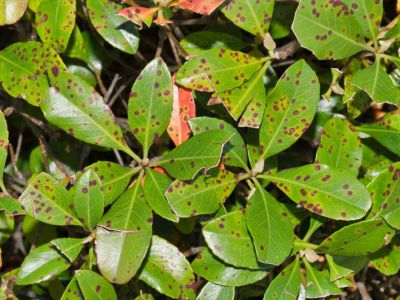Symptoms of Bacterial Leaf Spot
Bacterial leaf spot on plants may manifest in several different ways. Symptoms of bacterial leaf spot may include black edged lesions, brown spots with yellow halos, or just light and dark areas on the foliage. Spots are irregular and measure between 3/16 and ½ inch (5 mm. to 1 cm.) wide. They can occur on the top or bottom of a leaf and kill sections of the tissue when they cluster together. Symptoms of bacterial leaf spot may also appear on the edges of a leaf, where it appears brownish yellow and the tissue dries and breaks off. The leaves become quite papery and delicate when the bacterial disease attacks the leaf edges. The disease is most prevalent on older leaves, but will quickly establish on newer tissue.
What Causes Bacterial Leaf Spot?
Organisms that cannot be seen with the naked eye are the cause of this visibly damaging plant disease. Wet, cool conditions promote the formation of these bacteria, which can spread on plants quickly. The bacteria splash onto leaves or overwinter on plant debris in soil. Bacteria divide to reproduce and one bacterium can multiply quickly in just a matter of hours. Bacteria reproduce the fastest when temperatures are 77 to 86 degrees F. (25-30 C.). High rates of infection will cause leaf loss and can seriously compromise a plant’s health. This makes the disease extremely contagious and bacterial leaf spot disease treatment extremely important. The pathogen is carried in infected seed as well, although, there are some disease resistant seed strains for food crops. Additionally, choose disease free transplants, rotate crops, and avoid overhead watering to prevent spreading the bacteria.
How to Treat Bacterial Leaf Spot
In addition to the previous tips on preventing the spread of the disease, you can use a copper fungicide on crops. This has limited management use unless it is applied early in the disease cycle. On ornamental plants, remove the affected leaves at the first sign to prevent the bacteria from jumping onto adjacent leaves. Some of the most common hosts are lettuce, beets, eggplant, peppers, and large leaved ornamental plants, such as philodendrons. Remove old vegetable debris in the garden and do not plant new crops where host plants were once growing. There are no recognized chemical treatments for bacterial leaf spot disease. Your best bet is prevention and mechanical control at the first sign of symptoms of bacterial leaf spot.
